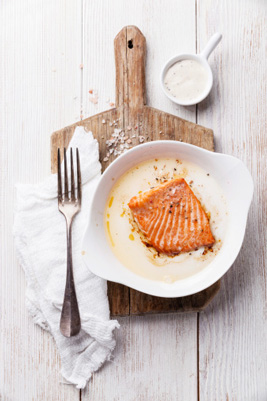Abi Gezunt! ''Be Healthy!''
Permanent link All Posts
When I had my restaurant in New York, I would take a break outside on 55th street and Madison Avenue. I watched, day after day, 2 hot dogs carts at lunch time. One cart was a kosher cart and one was not. I saw long lines form at the kosher cart as people would wait traffic light changes just to get to the kosher cart.
I almost felt bad for the non-kosher cart as the lines were miniscule compared to the kosher cart.
I asked a cook in my kitchen who was a native NY’er and he told me that the perception was that the kosher dog was better/healthier.
Better? Maybe! Healthier? Probably not! Unless those dogs were nitrate and coloring free there are basically the same other than the whole kosher part.
Observant Jews know that keeping kosher does not necessarily equate with healthy eating and living.
Indeed the Jewish calendar is a minefield of dietary disasters waiting to happen. Jewish Holidays are food-centric and the norm and let’s face, we are food people! With us cheesecake and dairy goodies on Shavuot, fried potato pancakes during Chanukah, an eight-day eating fest during Pesach and Shabbat with its long leisurely meals and some Jews even feeding their neshama yeterah (extra soul on Shabbat), it’s no wonder many Jews are loosening their waistbands and are concerned about their health.
Eating to excess and high cholesterol foods are unhealthy regardless of whether they are kosher or not. Jewish dietary laws are not laid down as health laws, but religious laws, but there is no law for the quality of the food, nor for the amount eaten, just that it be kosher.
As a chef, I cannot offer advice on diets and weight loss; I can however tell you that the quality of food does matter. I work with food all day long. I read labels and understand ingredient function and I can tell you that the best tasting and most satisfying food is that food made from whole ingredients.
We hear over and over again to limit processed foods. Most packaged food products are made from inferior ingredients, loaded with salt and sugar and cheap fats. Unfortunately many of them are kosher and widely purchased and served. As a chef, I am going to say that everything you make from a box, jar or package can be made better at home.
We are also told to eat seasonally. Seasonal food is cheaper, better tasting, and easier on the environment. I am going to go one step further and tell you that seasonal food is exactly what your body needs at the time it is in season. Ever notice how citrus fruit season peaks at cold season? Here in the Midwest we don’t grow citrus but we do have long storing hard shell squash like acorn squash, butternut, and pumpkin. These versatile fruits (yes they are fruit) are loaded with vitamin C, folate, and other vitamins just at the peak of cold season and just what your body needs to make it through the winter.
But how do you know what is in season? My best advice is to visit a Farmer’s market. Get to know the farmer, visit their farm, and learn to cook with local and seasonal foods. It is exactly what your body needs.
I have been cooking professionally for a long time and I still get excited when I see gorgeous ingredients at the peak of their season. I spend hours cooking and experimenting with delicious foodstuffs only to watch people SNARF up their meal in minutes.
Hey! I want you to enjoy the food, but maybe enjoy each bite? Slowly and carefully, really enjoy the food I just made. Doctors and nutritionists are right when they say that our stomachs need time to signal the brain when they are full. If you eat slowly, you will be in sync with your body. I will never forget my first dinner service at my former restaurant. I was sitting at the bar (resting my weary body!) when a customer came up to me and gave me a thumbs up for what she said were NICE PORTIONS!
Maybe if she ate slower and more mindfully, the flavor and perfectly seasoned food would have been the thumbs up?
Eat well my friends and enjoy your food. Abi Gezunt!
Cumin-Brown Sugar Dusted Sock-Eye Salmon, Harissa Spiked Coconut Yogurt, Toasted Farro and Mustard Seed Roasted Carrots
This easy to prepare but flavor packed salmon dish takes advantage of wild salmon. Sustainable and heart healthy salmon has natural sweet brininess that is enhanced with a brown sugar and cumin crust.
For the Salmon
4 6-ounce
Wild Sock-eye Salmon Filets, skinned and boned
EVOO (extra
virgin olive oil)
2
tablespoons light brown sugar
3 teaspoons
ground cumin
Kosher salt
Freshly
cracked pepper
1. Lightly pat dry the salmon filets. Season the salmon with kosher salt and pepper.
2. Heat a sauté pan, lightly coated with EVOO, over medium high heat. Place the salmon filets, presentation side down (non-skin side) in the pan. DON’T FUSS WITH THE FISH!! Allow the fish to caramelize and brown.
3. Turn the salmon, remove from heat and cover the pan to finish the cooking process.
For the Harissa Spiked Coconut Yogurt
Coconut yogurt is lightly coconut flavored and has a lusciously decadent texture. Zesty harissa adds a toasty heat with complex spices and garlic.
1 cup
coconut yogurt
3
tablespoons purchased or homemade harissa (or favorite hot sauce)
2 teaspoons
lemon juice
½ teaspoon
kosher salt
Pinch of
freshly cracked pepper
Toasted Farro
My new favorite old grain! Farro has been farmed since Neolithic times and is grown almost exclusively in Italy. The chewy, nutty flavored nuggets are perfect with meat, fish, and veggies. High in fiber, protein and vitamin B3, farro packs a nutrition and flavor punch with undertones of cashew and earthy cinnamon.
1 cup farro
2 cups water
½ teaspoon
kosher salt
¼ teaspoon
freshly cracked pepper
2 teaspoons
lemon juice
2
tablespoons chopped flat leaf parsley
1 tablespoon
chopped cilantro
1 tablespoon
chopped basil
3
tablespoons EVOO
1. Toast ⅓ cup of farro in a sauté pan, lightly coated with olive oil, over medium heat. Toast the grains until they are medium brown and smell like popped corn.
2. Simmer the water and all the farro, covered, over medium heat until the water has been absorbed and the farro is tender (about 20 minutes).
3. Add the remaining ingredients to the farro and combine. Adjust seasoning with salt and pepper.
Mustard Seed Roasted Carrots
1 pound baby carrots, peeled
EVOO
2 teaspoons mustard seeds
1 teaspoon fennel seeds
Kosher salt
Freshly cracked pepper
Preheat oven to 350 or grill to medium
1. Toss the baby carrots with the oil, spices and salt and pepper.
2. Spread the carrots on a parchment lined sheet pan or on an oiled grill.
3. Cook the carrots until they are fork tender (about 15 minutes).
Homemade Harissa
Like everything else, homemade is always best! Harissa is quick to whirl up in a blender or food processor.
This recipe is only a guideline. Make it your own by adding roasted garlic, fresh herbs, additional spices and even fresh hot peppers.
½ cup
crushed red pepper flakes
½ cup
boiling water
2 roasted
red peppers
3 cloves of
garlic
1 large
lemon, zested and juiced
1 teaspoon
cumin powder
⅓ cup EVOO
½ teaspoon
kosher salt
1. Rehydrate the crushed red chili flakes in the boiling water until they are quite mushy (about 10 minutes). Drain the water and discard.
2. Process all the ingredients in a blender or food processor until the sauce is smooth. Adjust seasoning with salt and pepper
Place the farro on a serving platter, arrange the salmon on top of the grains. Place the carrots on the platter and drizzle with harissa spiked coconut yogurt.
Garnish with chopped fresh herbs and lemon slices.



.jpg)



